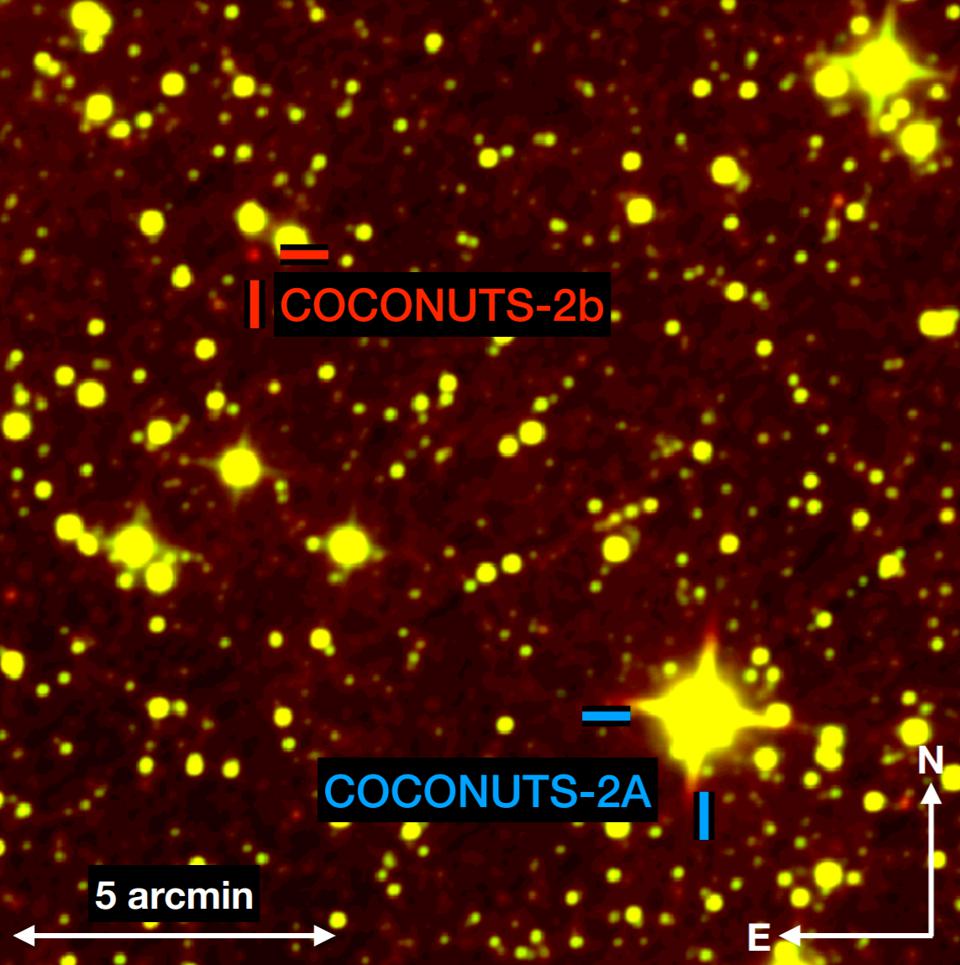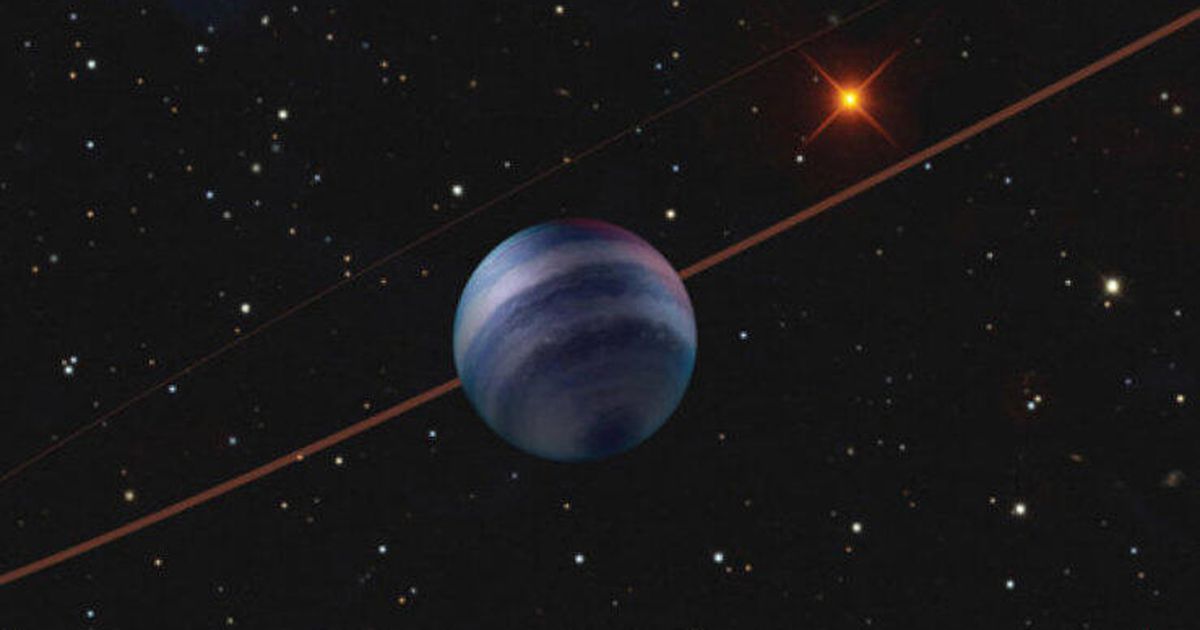Tracking exoplanets is hard – especially when that exoplanet is so far away from its parent star that the normally used “transit” method of watching it dim the light of the star itself is ineffectual. But it really helps if the planet is huge, and has its own infrared glow, no matter how far away from its star it might be. At least those properties allowed a team of scientists from the University of Hawai’i to track a particular exoplanet called (and we’re not kidding) Coconuts-2b.
We here at UT are no stranger to whimsical astronomical naming, but the Cool Companions on Ultrawide Orbits (Coconuts) survey may take the cake. This new planet that survey turned up is almost 6 times the size of Jupiter and is orbiting its star at an astonishing 6,000 times the distance from the Earth to the Sun.

Credit – NASA / WISE / Zhang et al.
That incredible distance made the original discoverers of the planet back in 2011 using WISE think it was “rogue”, meaning it wasn’t gravitationally bound to any particular star. They were only able to see it because the planet itself is still glowing with a waste heat built up during the planet’s formation, which is visible in the infrared spectrum.
But new research shows that Coconuts-2b is in fact gravitationally bound to a star, L 34-26, just as an absurdly far distance. The system it is bound to isn’t even all that far from Earth – at 35 light years away it is one of the closer exoplanets found of the 4,000 so far. It’s also not even the planet that is the farthest from its host star – that honor goes to the planet 2MASS J21265040-8140293, which is separated at an astonishing 7400 AU from it’s parent star, TYC 9486-927-1. Those names so how much more appealing a name like “Coconuts 2b” truly is.

Credit – NASA / UNWISE & Melina Thevenot
Names aside, the experience on either of those worlds would be so very different from the experience as we know it here on Earth. In addition to the crushing gravity, night time and day time on the planet would appear to be almost the same. The star it is orbiting would simply appear as a bright red star in a sky that is similarly full of them.
In addition to providing an interesting thought experiment for what it would be like to live on such a world, the planet will also provide some insight on planetary formation and evolution, especially for large gas giants like our own Jupiter and Saturn. Maybe its unique name will attract even more attention and allow the planet to take its place as an important outlier amongst the heap of exoplanet discoveries that has come out in recent years.
Learn More:
cnet – Meet Coconuts-2b, an exoplanet with six times the mass of Jupiter
Forbes – Astronomers Go Nuts For Closest Exoplanet Directly Imaged Ever: COCONUTS-2b
SciTech Daily – Massive COCONUTS Exoplanet Discovery: Giant Planet Just 35 Light Years From Earth
arXiv – The Second Discovery from the COol Companions ON Ultrawide orbiTS (COCONUTS) Program: A Cold Wide-Orbit Exoplanet around a Young Field M Dwarf at 10.9 pc
Lead Image:
Illustration of Coconuts-2b on its orbit around its parent red dwarf star 6000 AU away.
Credit – B. Bays (Soest / UH)

